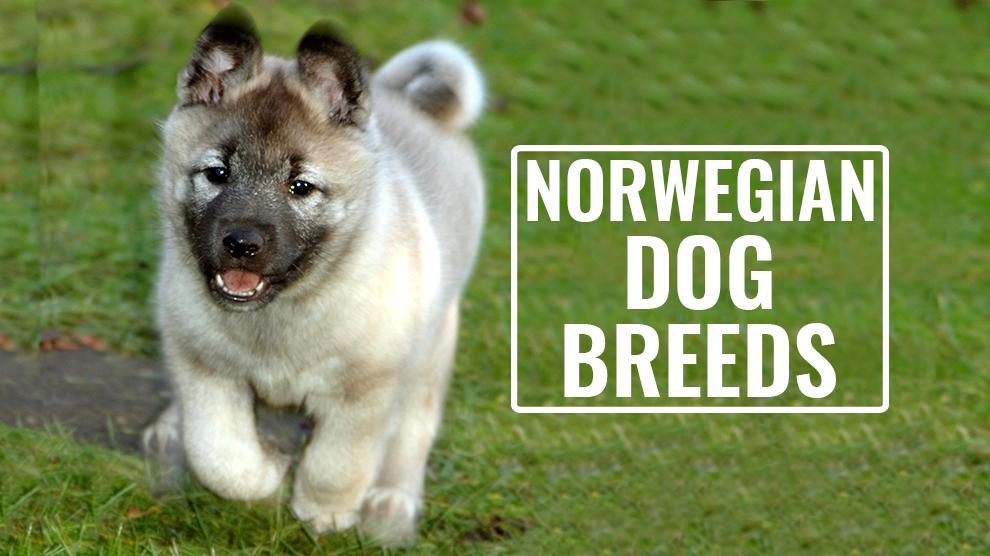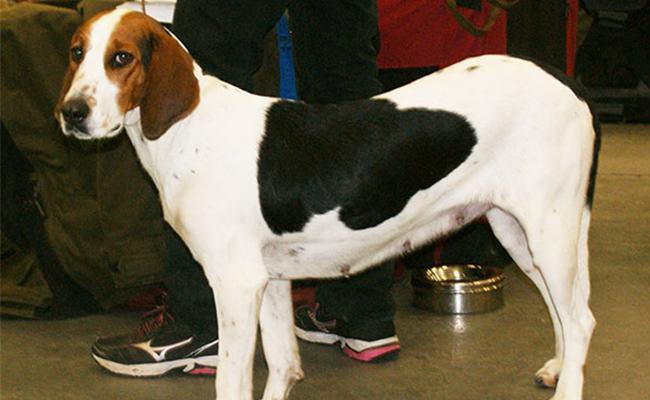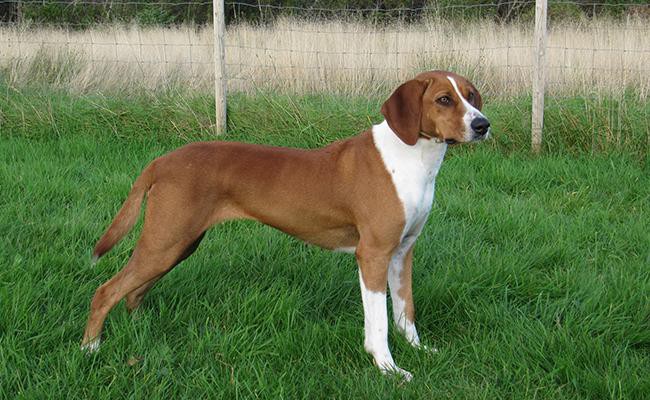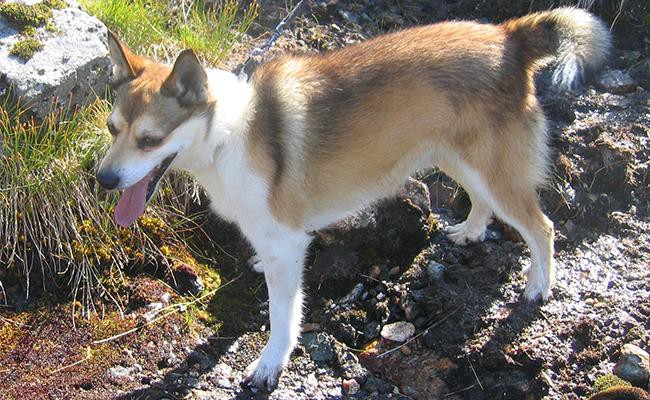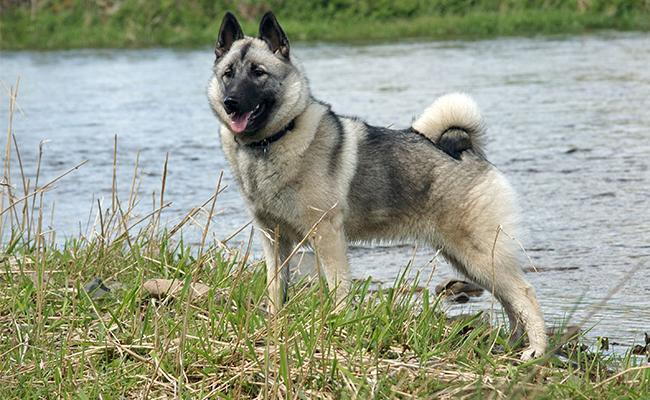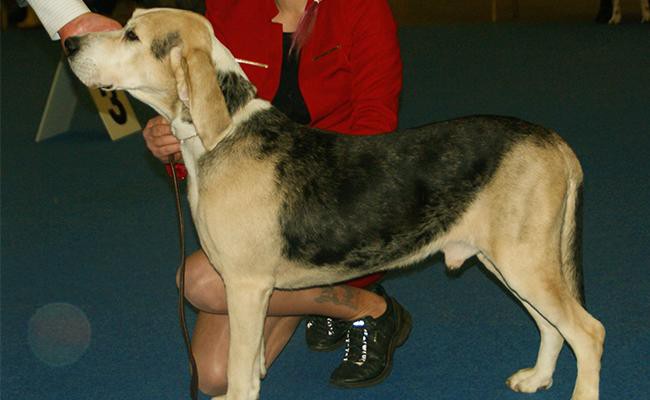Dog Pregnancy Calculator And Timeline
Norwegian breeds, as they are called, mostly grouped under Nordic or northern breeds.
They have their origins in the North, in a cold and harsh climate that caused the survival of only healthy, sturdy specimens. Norway has seven native dog breeds and all of them are working dogs.
Black Elkhounds are considered to be the Grey Elkhound’s “little brother”. However, Nordic kennel union considers it as a separate breed.
The Norwegian dog breeds have varied uses: guarding and herding the cattle flocks, hunting, companionship, watching and defending, destroying the pests, at the sleighs tug, etc.
These dogs love the exercise, long walks, to some of them like to roam, going away from home when they can. They have a powerful hunting instinct.
These dogs feel the best in a cold climate, loves the snow and low temperature.
They usually get along well with other dogs, not hostile, and are pretty friendly. Some of them really don’t like being alone and prefer the company of other dogs.
These dogs are clever, courageous, eager to learn, pretty compliant but also independent, sometimes stubborn.
They are highly recommended for active families, with experience in raising dogs, who can offer to dogs, the possibility to make much exercise.
All the Norwegian breeds have a good temperament, so that would not be the reason for not choosing them.
According to Norwegian Kennel Club reports, only the Norwegian elkhound Grey is safe. The six other Norwegian dog breeds are at risk, with the Hygen Hound as the most endangered.
You will be able to see what a wonderful dog culture Norway has. They have so much respect for dogs. People don’t spay or neuter their dogs, yet there are no strays and no shelters.
Everyone is very keen on breeding appropriately and finding good homes for the offspring. Prices for breeds seem to be set, so you can’t charge more for better bloodlines.
Still, it is unfortunate to see a downward trend when it comes to Norwegian dog breeds in recent years.
Halden Hound (Norwegian Haldenstover)
The medium-sized Halden Hound is a rare breed originated in Norway about one hundred years ago used for hunting hares and other plains quarry.
This Norwegian hare hound was named after the town of Halden, a town in southeast Norway close to the Swedish border where the breed was actually developed in the early 1900s by crossing an indigenous dog of Norway with Foxhounds, Beagles, and other scenthounds.
The smallest of the Norwegian hounds is solidly built, with pendulous ears, an athletic body, and long limbs. Bred to hunt Norwegian hares, it is essential that this dog exhibits impressive speed and stamina when out working.
This breed is a good example of a working dog that is equally suited to life within the home. The Halden Hound gets on really well in the family environment and enjoys spending time in human company.
Sometimes independent, this breed is not recommended for first-time owners, as it can be tricky to train.
Appearance: When you first glance the Halden Hound you would surely mistake it for an American Foxhound as both have the same body built and coloring.
They are medium-sized, dogs with a solid build, agile and athletic with distinctive musculature (neither bulky nor lanky)
Coat: weatherproof coat straight, dense and harsh to the touch. This breed has a dense undercoat.
Colors: Tri-color, Black & White. The predominant coat color is white made distinct with tan shadings on the dog’s head and legs; black markings on the dog’s body.
Size: 40 – 55 pounds (18 – 24 kg)
Height: 20 – 24 inches (50 – 60 cm)
Life Expectancy: 12-14 years
Hypoallergenic: no
Best Suited For: Hunters, Active family, those who are living in a house with a yard and families with children.
First-time owners: NO
Temperament: Affectionate, Cheerful, cautious, loyal, independent, playful, energetic
This breed prized by hunters for its extraordinary hunting instincts, and the ability to hunt in very difficult conditions: deep snow, Freezing temperatures, dense forests, and mountain terrains.
This lightweight hunter elegantly sprints after its quarry. However, the dogs would be docile and affectionate at home – Due to its gentle and light-hearted nature, this dog makes a wonderful companion and playmate of the children.
- Grooming Needs: Minimal
- Shedding: Moderate to high
- Barking: Good
- Tolerance to Heat: Low
- Tolerance to Cold: Very good
- Trainability: Easy
- Exercise needs: High
Health issues:
- Major health concerns: Hip and elbow dysplasia
- Minor concerns: eye infections, foot and toenail injuries
Average Price:$1000-$1200 USD
Hygen Hound (Hygenhund)
Despite the fact that you’ve probably never heard of the Hygenhund, you’ll distinguish his look.
You may not bump into a Hygenhund as they seem exclusive to Norway, but you should still know of its existence.
In spite of the rarity of the breed, the UKC recognized the breed within their scent hound group in 2006 and the FCI classifies them in Group 6.
Resembling the Norwegian Dunker Hound, he is a medium-sized robust dog with the typical hound appearance – he’s muscular, lithe and active.
The Hygen Hound was created by a Norwegian procurator Hans Fredrik Hygen whose aim was to develop the ideal hunting dog that could endure the harshest of weather conditions of Scandinavia in the winter.
German Holsteiner Hounds were bred with the lighter, more compact Norwegian hounds including a number of different Scandinavian Hounds, in the quest of the ‘perfect hunter’.
Though used primarily for hunting, they also tend to do well as family pets. If you’re looking for a devoted, docile dog that will also make a good watchdog, the Hygenhund may be a good choice of dog for you.
Appearance: Aside from a subtle difference in size and in color, the Hygenhund looks just like a few other Nordic hounds that are why many get confused it with the Dunker.
They are a medium sized scent hound that is compact and solidly built with pendulous ears that hang and frame his face. The Hygenhund is well muscled and should never give the appearance of being bulky.
They look balanced and have a smooth, reaching motion when moving.
Coat: Weatherproof thick, short coat of the Hygen Hound offers good protection in the winter months. It is harsh to the touch and should have a nice sheen to it.
Colors: Red with Black Markings, Black & Tan, White with Red, Black or Tan Markings
Size: 44 – 55 pounds (19 – 24 kg)
Height: 20 – 24 inches (50 – 60 cm)
Life Expectancy: 12-14 years
Hypoallergenic: No
Best Suited For Hunters, Active family, experienced dog owners, those who are living in a house with a yard and families with children.
First-time owners: No
Temperament: Affectionate, Cheerful, cautious, loyal, independent, playful, energetic
This endurance hunter can traverse arctic-type terrain for proverbial “ages” without suffering from exhaustion.
While lively and energetic, they can act more coolly when in the home, especially when they have returned from a satisfying hunt or after being exercised.
They can make both good watchdogs and good guard dogs. But, it is difficult for owners to have visitors over unless they socialized their Hygen Hound from puppyhood.
Similarly, this dog is known to have territorial tendencies.
- Grooming Needs: Average
- Shedding: Moderate
- Barking: Good
- Tolerance to Heat: Low
- Tolerance to Cold: Very good
- Trainability: Easy
- Exercise needs: High
Health issues:
- Major health concerns: Usually a healthy breed
- Minor concerns: Hip and elbow dysplasia, GDV or bloat
Average Price: $1000-$1200 USD
Norwegian Lundehund (Norsk Lundehund)
The breed name is a mishmash of the Norwegian words “Lunde” which means (Fratercula arctica or puffin) and “Hund” – hound or dog. They are also known as the “puffin dog”.
The breed is so rare that there are only 1500 dogs worldwide and only 350 registered Lundehunds inside the United States…hardly surprising that they’re at the bottom of the AKC list!
The Lundehund hails from remote islands off the coast of Norway. The dogs were an important part of Norway’s coastal community’s livelihood where his job was to scale wet, rocky areas where puffins had their nests.
They were used to hunt for puffin bird for its meat and bring them back to his owner.
Appearance: The Norwegian Lundehund is quite an evolutionary spectacle—these dogs have a truly unusual anatomical characteristic, which cannot be found in any other breed in the world (not at least, in this combination).
They have fully functional six toes—four facing forward and like dual thumbs- two facing to the side and back of the paw—with eight paw pads below.
The rear feet have a minimum of six toes (of which four bear the dog’s weight) and seven pads with an elongated center pad.
This Polydactylism (presence of extra toes) was selectively bred into the Lundehund to increase its stability, traction and superb braking system on the sneaky cliffs as well as tight spaces.
They’re also extremely springy and can twist their necks almost backward so that they can touch the spine with the top of their head.
Their flexible shoulder joints allow them to stretch out flat and their forelegs can be moved sideways at a 90-degree angle to the side of the body.
They also have ear flaps that close down like a garage door over the inner ear canal, creating a nice, tight seal as the dogs scrape against the rock.
Coat: They have short, double coats that work to keep them warm in frosty climates of Nordic countries. While they have rough outer coats, their inner coats are very soft.
Colors: Reddish-brown/fawn with black hair tips; black or gray with white markings or with white with dark markings
Height: Male: 11-15 inches (30 – 38 cm), female: 11-14 inches (30 – 36 cm)
Weight: Males: 6 – 10 kg (13-22 lbs) and Females: 6 – 9 Kg (10-20 lbs)
Life Expectancy: 12-14 years
Hypoallergenic: No
Best Suited For: Hunters, Active family, experienced dog owners, houses with a yard and families with children.
First-time owners: No
Temperament: Affectionate, light-hearted, cautious, loyal, independent, playful, energetic
They are generally outgoing and cheerful with his family but he tends to be wary of strangers. Along with his alert nature, that natural circumspection can make him an outstanding watchdog, while he is typically not offensive toward people.
He’s usually a good buddy for older, active children, but he may not be the best choice for families with toddlers. They don’t tolerate being handled roughly or teased by small kids.
Thanks to their size and laid-back nature, they adapt well in a variety of settings, ranging from small apartments to large homes. They are also up for an adventure if needed.
- Grooming Needs: Average
- Shedding: Moderate
- Barking: Good
- Tolerance to Heat: Low
- Tolerance to Cold: Very good
- Trainability: Easy
- Exercise needs: High
Health issues:
- Major health concerns: Lundehund Syndrome
- Minor concerns: Hip and elbow dysplasia
Average Price: $ 2000 and up
Norwegian Buhund (Norsk Buhund, Norwegian Sheepdog)
The Norwegian Buhund (pronounced BOO-Hund) is a medium-sized, intelligent, affectionate, and energetic northern breed of the Spitz type.
They are also known as Norsk Buhund, Buhund Norvegien, Norwegischer Buhund, and Buhund Noruego. The dogs often lived in the barn, and they were used for herding cattle, small livestock, pigs and reindeer.
The Norwegian Buhund population dwindled, to some extent due to the introduction of foreign breeds in the early 1900s.
Fortunately, the situation was taken seriously by the Norwegian Kennel Club and a considerable effort was made to save this unique breed.
There are many active breeders in the “sheep county” Rogaland in Atlantic coast of south-western Norway. In recent years, almost 100-150 Norwegian Buhund puppies are registered annually by the Norwegian Kennel Club.
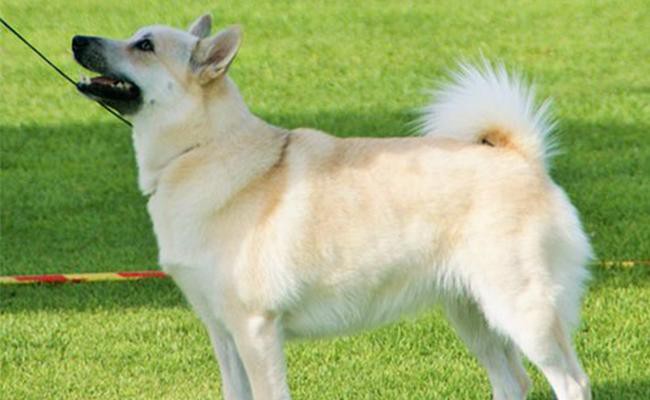
Appearance: The Norwegian Buhund is a medium-sized herding breed dog that shows classic spitz characteristics, such as a foxy face, stocky body, a wedge-shaped head, prick ears and a high-set tightly-curled tail.
When viewed from the side, they are square in proportion. Their large and very movable ears help them to pick up even the faintest of sounds from far away in almost every direction.
When showing affection or relaxed, their ears tilt towards the back attractively. They have dark and rimmed in black, gentle eyes that contribute to their warm expression.
Coat: They have a thick, off-standing, weather-resistant, dense coat that is able to withstand nearly any weather conditions, just like his ancient ancestors. They have a rather short and relatively hard overcoat. A dense and very soft basecoat cushions the topcoat.
Colors: wheaten or black. The wheaten variant can range from very pale beige color to a vibrant orange, with or without dark-tipped hairs.
The black variant should preferably be self-colored (without too much bronzing), but white as a blaze, collar or chest spot and on the legs is acceptable
Height: Male: 17-18 inches (43 – 45 cm), female: 16-17 inches (40 – 43 cm)
Weight: Males: 14 – 18 kg (31-40 lbs) and Females: 11 – 9 Kg (26-35 lbs)
Life Expectancy: 12-15 years
Hypoallergenic: No
Best Suited For: Hunters, Active family, experienced dog owners, houses with a yard, farm/rural areas and families with children.
First-time owners: No
Temperament: attentive, Affectionate, light-hearted, cautious, loyal, independent, playful, energetic
The agile but athletic Buhund is an alert and energetic busybody, communicating with his people through barks, yips, trills, chortles, and yodels.
Intelligent and watchful, he will alert you to anyone approaching the home and patrol the house or property in big circles, reminiscent of his past as a herding dog.
Compared with other spitz breeds, this breed is less headstrong and more eager to work with masters.
But he still has an occasional independent streak and may use his brains in clever ways that suit his own purposes. Yet, for experienced owners who know how to lead will find him extremely trainable.
They are not picky, high-strung, finicky or clingy dogs, nor are they overly animated or aggressive.
Due to their independent streak, most Buhunds tend to do just fine if they need to be left alone for a reasonable period of time.
They get along well with other dogs, pets, kids and more than anything love to be involved in family activities.
- Grooming Needs: Average
- Shedding: Moderate
- Barking: Good
- Tolerance to Heat: Low
- Tolerance to Cold: Very good
- Trainability: Easy
- Exercise needs: High
Health issues:
- Major health concerns: Hip dysplasia, cataracts
- Minor concerns: Elbow dysplasia
Average Price: $800 – $1000 USD
Norwegian Elkhound Grey (Norwegian Moose Dog)
The Norwegian elkhound is an ancient typical Northern spitz-like breed and it is considered to be the flagship of the native Norwegian dog breeds.
The Grey Norwegian Elkhound is also getting popular in the USA. They have a long history as a flock guardian, big-game hunter, sled dog, and watchdog.
The grey Norwegian Elkhound is an expert in tracking moose (known as elks in the UK) which is where it got its English name.
They are also called as Chien d’élan norvégien gris, Norsk Elghund grå, Norwegischer Elchhund grau, Harmaanorjanhirvikoira, Cazador de Alces Noruego Gris and Norsk älghund grå
While we don’t know what the ratio of grey dogs to black dogs was in ancient times, but the breed standard for the Elkhound since the late 1800s specified only grey dogs.
Some native breeders favored the black dogs nevertheless and continued to breed them although they were not recognized by the major kennel clubs.
Consequently, the Norwegian Elkhound Black was bred with different priorities, creating a more agile, smaller dog with stronger prey drive and a keener sense of smell. Black variants are rarely seen outside of Scandinavia.
Appearance: The Grey Norwegian Elkhound lean, muscular canine and has a proud posture. The breed should not be too heavy and should be lightly, squarely built without being slender.
The breed standard has a specific emphasis on a dark mask, squarely-built, strong body, wedge-shaped head, erect triangular ears that sit high up on their heads and are often turning and swiveling-listening for sounds, a high-set tail that is firmly arched over the center line, well angulated and graceful movements.
Coat: They have a thick, smooth-lying coat consisting of a long, coarse outer coat with straight outer hairs and a dense, wooly undercoat.
Colors: Black & Gray, Black & Silver, Black White & Silver, Gray & Black, Gray Black & Silver, Silver & Black, Silver Gray & Black
Height: Male: 18-21 inches (46-53 cm), Female: 18-20 inches (46-51 cm)
Weight: Male: 50-60 pounds (23-27 kg), Female: 40-55 pounds (18-25 kg)
Life Expectancy: 10-12 years
Hypoallergenic: No
Best Suited For: Hunters, Active family, experienced dog owners, houses with a yard, farm/rural areas and families with children.
First-time owners: No
Temperament: attentive, bold, cautious, energetic, loyal, light-hearted, independent, Strong Willed
He’s a good choice if you like a Spitz breed with a bold, energetic outlook and an effective guardian yet normally friendly, with great dignity and independence of character.
He is a bundle of energy and needs daily exercise that will challenge him mentally and physically. They are highly esteemed as big game dogs, especially for elk hunting and still are, used for bear hunting. He barks a lot.
The robust, cheerful Elkhound is friendly in general, but he will alert you to anyone approaching the home, and his deep bark terrorizes the intruders.
If they are not properly trained, they may drive the neighbors barking mad. The loving and good-natured Elkhound enjoys older children company and can be a good playmate.
- Grooming Needs: Average
- Shedding: Moderate
- Barking: Good
- Tolerance to Heat: Low
- Tolerance to Cold: Very good
- Trainability: Easy
- Exercise needs: High
Health issues:
- Major health concerns: hip dysplasia, pyotraumatic dermatitis, and PRA
- Minor concerns: Fanconi syndrome
Average Price: $800 – $1000 USD
Norwegian Hound (Dunker in Norway)
The Norwegian Hound is known in his native country as Dunker and it’s always tempting to attribute “Dunker” to some amazing acrobatic move on the dog’s part, but it’s simply the name of the man who created the breed, Captain Wilhelm Conrad Dunker.
He developed this medium-sized, powerfully built, versatile, well-balanced scent hound by crossing scent hounds with Russian Harlequin Hounds.
He bred this dog as he wanted a reliable scent hound that could hunt rabbits by scent, rather than sight.
Similar to a lot of single-region hunting dogs, dunkers are good-natured and loving animals, priming them for an ultimate transition into that of companions.
Dunkers are less known outside of Scandinavia where they are typically kept as working dogs rather than as pets.
Appearance: The Dunker gives an impression of striking elegance. They are a medium-sized, distinctly rectangular dog; standing just less than two feet tall at the withers, athletic build, but should not appear heavy.
The bluish-white iris of the eyes called “glass eyes” is the unique characteristic of this breed although the breed standard also allows other eye colors. His Medium-long tail is carried straight or in a slight upward curve.
Coat: The Norwegian hound has a straight, harsh, thick and not a too short coat. Apart from their drive and excellent scent-trailing abilities, they are well-known for their unique marbled blue (dappled) coat.
They are one of the few hounds carrying a marbled blue color pattern created by the merle gene (Kerry Beagle, Mountain Cur and the dappled Dachshund are three others).
Dunkers definitely should have inherited the gene from their Russian Harlequin Hound ancestor.
Colors: The most sought-after colors being black or blue marbled with white and pale fawn markings.
Less desirable are predominant black or white and too warm brown colors reaching from the muzzle and ahead of the hock joint.
Overmarked white i.e. more than 50% white is a breed standard disqualification.
Height: Male: 19-22 inches (48-55 cm), Female: 18-21 inches (45-53 cm)
Weight: Male: 25-39 pounds (11-17 kg), Female: 25-39 pounds (11-17 kg)
Life Expectancy: 12-15 years
Hypoallergenic: No
Best Suited For: Hunters, experienced dog owners, Active family, houses with a yard, farm/rural areas and families with children.
First-time owners: No
Temperament: Bold, cautious, energetic, loyal, laidback, relaxed, Strong Willed
While trained to be competent and courageous hunters, Dunkers are remarkably friendly dogs that appreciate giving and receiving lots of attention.
Surprisingly, they are relaxed and laid back when not on the hunt but their lack of concern to strangers doesn’t make them effective guarding or watchdogs.
The breed is also easy to train Due to its good temperament and open nature. Even without socialization or proper training.
Dunkers generally get along well with other dogs, family, and even kids but because of their hunting instincts, can easily become bothersome around other small non-canine animals.
- Grooming Needs: Average
- Shedding: Moderate
- Barking: Good
- Tolerance to Heat: Low
- Tolerance to Cold: Very good
- Trainability: Easy
- Exercise needs: High
Health issues:
- Major health concerns: Deafness
- Minor concerns: Hip dysplasia
Average Price: $800 – $1000 USD

